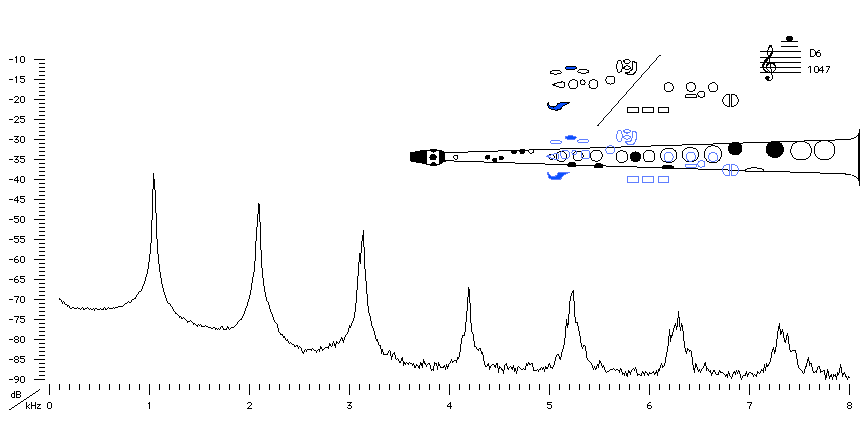| Acoustics of the saxophone |
Bb soprano saxophone |
D6 |
 |
Fingering Acoustic schematic Non-specialist introduction
to acoustic impedance Notes are the written pitch. |
This note is still in the second register – it plays at the second peak on the impedance spectrum. On most other woodwinds, the corresponding note would start a third register, using a resonance related to the third peak of the note G4. However, that peak falls above the cut-off frequency, which is about 1 kHz, and is too weak (and too sharp).
This fingering uses a register hole. This causes a leak in the bore that weakens the first impedance peak, but has little affect on higher peaks – see register hole for an explanation, and compare with the alternate fingering for D5, whose impedance spectrum is almost identical except for the first peak. Above the second peak, the curve is irregular: see the discussion in cut-off frequency.
Compare with the impedance spectrum for a tenor sax on written D6: same fingering but sounding one octave lower.

Sound spectrum
of a Bb soprano saxophone
played using fingering for D6.
For more explanation, see
Introduction to saxophone acoustics.
|
Contact:
Joe Wolfe
/ J.Wolfe@unsw.edu.au |